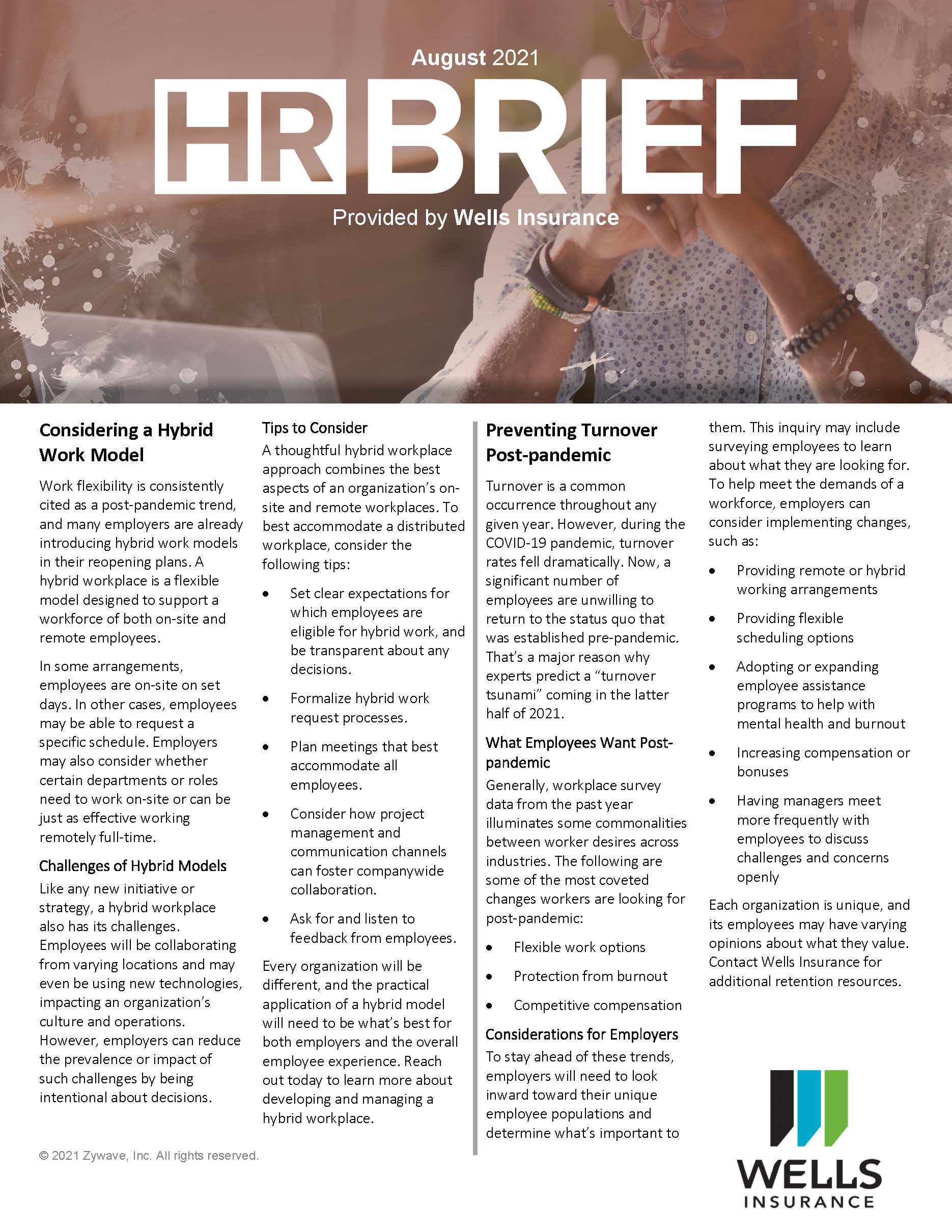

Workplace flexibility is frequently mentioned as a post-pandemic trend, and numerous businesses are already including a hybrid work model into their reopening strategies. Furthermore, experts foresee a “turnover tsunami” in the second half of 2021. Employers must look inward to discover what is important to them in order to stay ahead of these ever-changing trends.
Considering a Hybrid Work Model
A hybrid workplace is a flexible strategy for supporting a workforce that includes both on-site and remote workers. Employees are usually required to be on-site on specific days, or they may also be able to request a specific schedule in certain situations. Employers should also assess if some departments or tasks require on-site work or may be accomplished just as well working remotely full-time.
Tips to Consider
The best aspects of an organization’s on-site and remote workplaces are combined in a clever hybrid work model strategy. Consider the following suggestions to effectively accommodate a distributed workplace:
- Set clear expectations for which employees are eligible for hybrid work, and be transparent about any decisions.
- Formalize hybrid work request processes.
- Plan meetings that best accommodate all employees.
- Consider how project management and communication channels can foster companywide collaboration.
- Ask for and listen to feedback from employees.
Every company is different, thus the actual deployment of a hybrid model will have to be based on what is best for both employers and employees.
Preventing Turnover Post-pandemic
Turnover rates plummeted during the COVID-19 pandemic. Now, a large number of workers are adamant about not returning to the pre-pandemic status quo. Following are some of the most coveted post-pandemic adjustments sought by workers:
- Flexible work options
- Protection from burnout
- Competitive compensation
Considerations for Employers
Employers must turn inward to their distinct workforce groups to understand what is essential to them in order to keep ahead of these trends. Employers can consider making modifications to help fulfill the expectations of a workforce, such as:
- Providing remote or hybrid working arrangements
- Providing flexible scheduling options
- Adopting or expanding employee assistance programs to help with mental health and burnout
- Increasing compensation or bonuses
- Having managers meet more frequently with employees to discuss challenges and concerns openly
Each company is different, and its employees may have differing perspectives on what they value.
Content Copyright Zywave 2021


Leave a reply